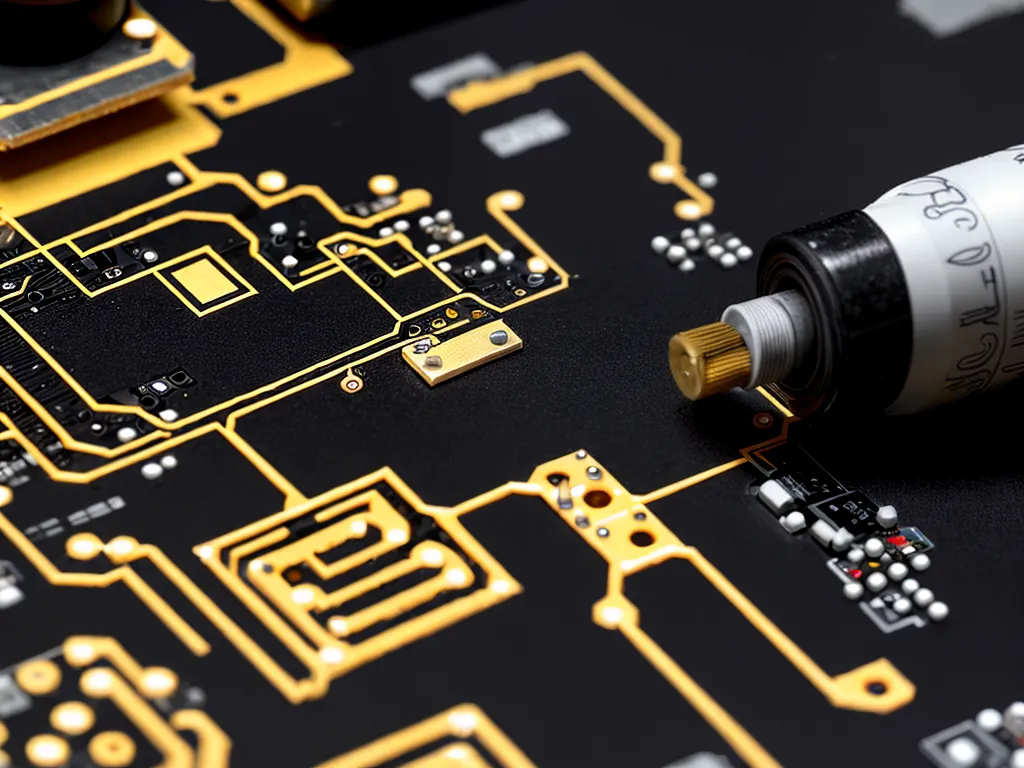
How to Use Conductive Ink for PCB Prototyping
Introduction
Printed circuit boards (PCBs) are essential components in nearly every electronic device. Traditionally, PCBs are made using complex and expensive manufacturing processes. However, conductive ink offers an accessible and affordable way to prototype custom PCBs right on your desktop.
In this guide, I will walk through everything you need to know to get started using conductive ink to build your own PCB prototypes.
What is Conductive Ink?
Conductive ink is a special ink that conducts electricity. It allows you to "print" conductive traces onto a variety of surfaces quickly and easily.
Conductive ink contains conductive particles suspended in a polymer binder and solvent. Common conductive particles include:
- Silver
- Copper
- Carbon
When the ink dries, these conductive particles are left behind, forming a conductive path.
Benefits of Using Conductive Ink
Using conductive ink for PCB prototyping offers several key benefits:
-
Low cost - Conductive inks are much cheaper than having PCBs commercially manufactured. This makes iterative prototyping affordable.
-
Rapid prototyping - Circuits can be drawn and modified quickly without complex fabrication steps.
-
Accessibility - Conductive ink can be applied using common materials like inkjet printers and paint brushes. No clean room required!
-
Flexibility - Conductive traces can be applied to flexible substrates, enabling flexible PCBs.
Materials Needed
To get started with conductive ink PCB prototyping, you will need:
-
Conductive ink - Many options are available including inkjet printable, paintable, and pen/syringe dispensable. Silver-based inks offer the best conductivity.
-
Substrate - The surface to apply ink to. Common options are paper, PET film, polyimide, glass and FR4.
-
Application tools - Inkjet printer, brush, pen, or syringe for applying ink.
-
Components - Electronic components like resistors, capacitors, ICs to solder to the PCB.
-
Soldering iron and solder - For assembling final circuit by soldering components.
Design and Layout
When designing your circuit for a conductive ink PCB prototype, it is important to follow some basic design rules:
-
Maintain adequate trace widths to conduct required current. Typically > 0.5 mm.
-
Provide sufficient spacing between traces to prevent shorts. Typically > 0.25 mm.
-
Minimize trace lengths to reduce resistance.
-
Incorporate large pads for easy component soldering.
-
Avoid sharp corners on traces that can cause ink buildup and shorts.
PCB layout software like Eagle or KiCad work well for designing practical conductive ink circuits.
Applying Conductive Ink Traces
Once your PCB layout is designed, it's time to apply the conductive ink. Use the following best practices:
-
Ensure your substrate is clean and dry before applying ink.
-
Build up trace thickness with multiple overlapping passes of ink for best conductivity.
-
Allow ink to fully cure per manufacturer recommendations before assembling components.
-
Carefully inspect traces under magnification to ensure good continuity with no gaps or shorts.
Assembling Components
With the conductive traces applied, electronic components can be soldered on to complete the circuit:
-
Use a low temperature soldering iron (300-350°C) to prevent substrate damage.
-
Ensure pads are thoroughly cleaned with alcohol prior to soldering.
-
Apply solder flux to pads and component leads to enable good solder flow.
-
Carefully inspect each solder joint under magnification for shorts and continuity.
-
Use adhesives like epoxy or Kapton tape to mechanically anchor components if needed.
Conductive Ink PCB Prototyping Tips
Here are some additional tips to get the most out of conductive ink PCB prototyping:
-
Iterate rapidly - Take advantage of the speed to test multiple design variations.
-
Start simple - Get experience with basic traces and pads before attempting fine features.
-
Limit trace lengths - Keep overall board size small to minimize resistance.
-
Inspect thoroughly - Use magnification to verify Trace quality and avoid shorts.
-
Consider encapsulation - Coat completed boards with acrylic to insulate if needed.
Conclusion
With some conductive ink, basic materials, and following best design and assembly practices, you can quickly and affordably build custom PCB prototypes. Experiment with circuit concepts faster and with lower risk and cost than possible with traditional PCB fabrication. Just be sure to inspect thoroughly for shorts and opens to create robust prototypes. Have fun bringing your electronics designs to life!